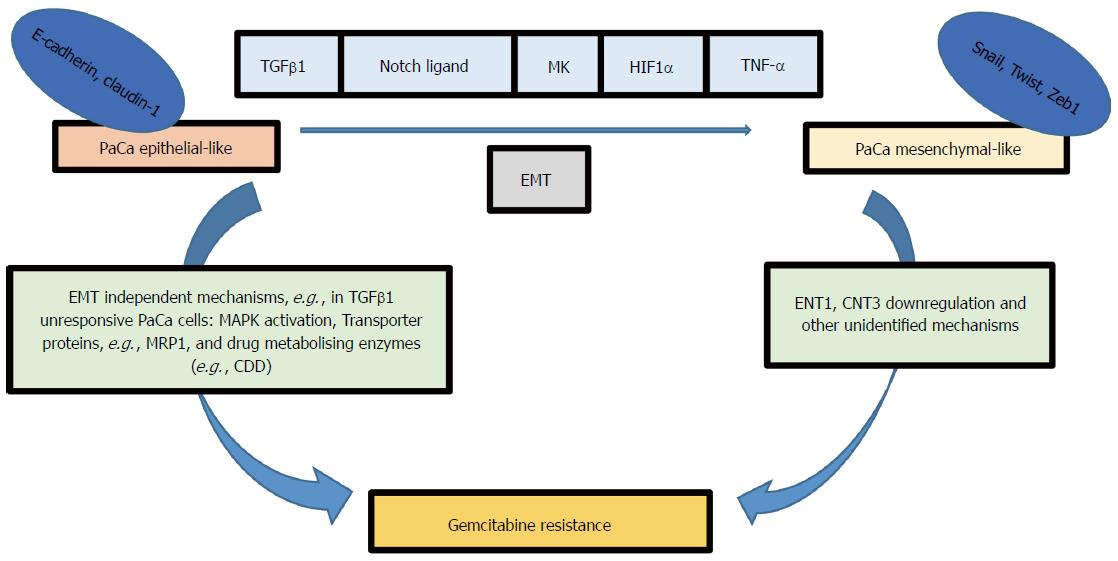Copyright
©The Author(s) 2017.
World J Gastrointest Oncol. Jan 15, 2017; 9(1): 37-41
Published online Jan 15, 2017. doi: 10.4251/wjgo.v9.i1.37
Published online Jan 15, 2017. doi: 10.4251/wjgo.v9.i1.37
Figure 1 Several signalling pathways can induce epithelial-mesenchymal transition in pancreatic cancer cells for example Notch, transforming growth factor-β, Midkine, hypoxia-inducible factor-1α and tumor necrosis factor-α.
EMT phenotype is associated with gemcitabine resistance; however, the signalling pathway relating EMT factors (e.g., Snail, Twist and Zeb1) to gemcitabine resistance is not clearly identified, although ENT1 and CNT3 upregulation was observed in KPC mice models with deleted Snail or Twist. EMT independent pathways can also lead to gemcitabine resistance for example MAPK activation, transporter proteins, and gemcitabine metabolising enzymes (e.g., CDD). MRP1: Multidrug resistance protein1; CDD: Cytidine deaminase; TGFβ: Transforming growth factor-β; MK: Midkine; HIF1α: Hypoxia-inducible factor-1α; TNF-α: Tumor necrosis factor-α; EMT: Epithelial-mesenchymal transition; ENT1: Equilibrative nucleoside transporter 1; CNT3: Concentrative nucleotide transporter.
- Citation: Elaskalani O, Razak NBA, Falasca M, Metharom P. Epithelial-mesenchymal transition as a therapeutic target for overcoming chemoresistance in pancreatic cancer. World J Gastrointest Oncol 2017; 9(1): 37-41
- URL: https://www.wjgnet.com/1948-5204/full/v9/i1/37.htm
- DOI: https://dx.doi.org/10.4251/wjgo.v9.i1.37









